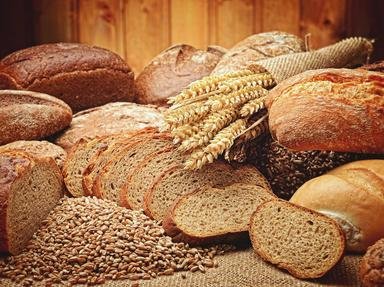Quiz Answer Key and Fun Facts
1. The word 'cereal' is often used to describe foods found at the breakfast table. Originally it referred to the plants from which certain edible grains were obtained. Which family of plants?
2. Which of the following produces a cereal grain?
3. Cereals are the edible parts of the grain, consisting of the endosperm, the germ and the bran. Which part(s) of the wheat grain are used to make white flour?
4. Untreated white wheat flour actually has a yellowish tint and so a bleaching agent is used to make it appear whiter. Which of the following is NOT used in the United States to bleach flour?
5. Gluten is an important component of wheat flour. What is it?
6. The gluten content of wheat can also be a problem for people. What disease is associated with gluten intolerance?
7. What mechanism linked flour to the death of 22 people at Minneapolis in 1878?
8. St Anthony's fire or ergotism is typically caused by repeated eating of food made from infected rye. What is ergot?
9. The herbicide glyphosate (marketed by Monsanto as 'Roundup') is used as a weedkiller. Increasingly now, it is also sprayed on cereal crops shortly before harvest. What is the main reason for this?
10. Norman Borlaug, often called the father of the Green Revolution, was awarded a Nobel prize for his part in improving world food supply. He developed high-yielding disease-resistant dwarf varieties of wheat which he then introduced into Mexico, Pakistan and India along with modern agricultural techniques. What is the advantage of dwarfing?
Source: Author
suomy
This quiz was reviewed by FunTrivia editor
WesleyCrusher before going online.
Any errors found in FunTrivia content are routinely corrected through our feedback system.
